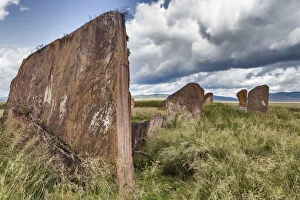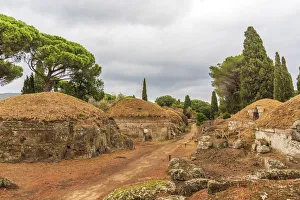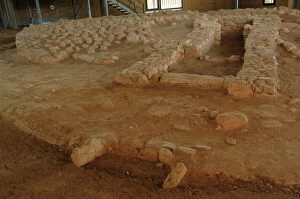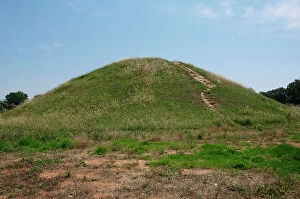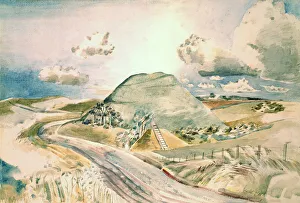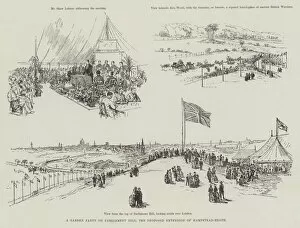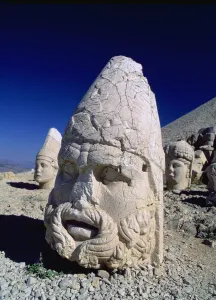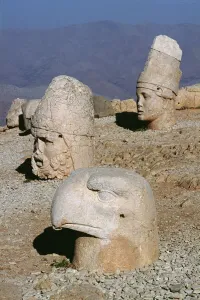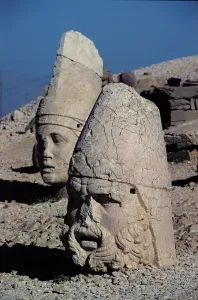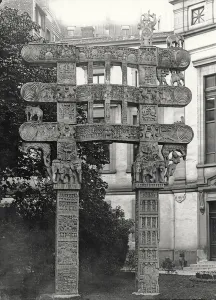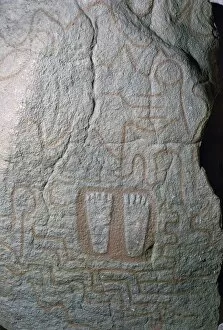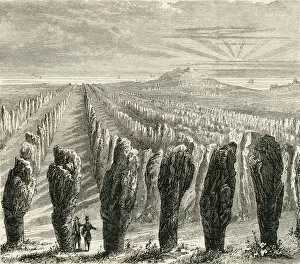Tumulus Collection
"Tumulus: Ancient Burial Mounds and Mysteries Unearthed" Silbury Hill, an impressive oil on canvas artwork, captures the grandeur of this ancient tumulus in England
All Professionally Made to Order for Quick Shipping
"Tumulus: Ancient Burial Mounds and Mysteries Unearthed" Silbury Hill, an impressive oil on canvas artwork, captures the grandeur of this ancient tumulus in England. Standing tall and enigmatic, it beckons us to explore its secrets. Traveling across continents, we arrive at a Cycladic cemetery in Greece dating back to the 5th Century BC. Here lies evidence of a vibrant civilization that honored their dead with elaborate burial rituals. In another corner of the world, an army of Athenian warriors from the Ancient Age stands ready for battle. Their tumulus serves as a testament to their bravery and sacrifice. Venturing further east, we encounter Salbyk kurgan in Khakassia, Russia. This 5th-century BC tumulus reveals insights into the lives and customs of ancient nomadic tribes who roamed these lands. Returning westward, we witness Germanic warriors gathered at a banquet near Stone Age stone circles in Schleswig-Holstein, Germany. These mysterious structures served as gathering places for ceremonies and celebrations. Journeying southwards brings us to Cerveteri in Latium, Italy - home to Banditaccia necropolis. This sprawling complex showcases intricate tombs where generations were laid to rest amidst Roman splendor. Silbury Hill reappears before us once more but now depicted on paper with watercolors. Its allure remains unchanged; it continues to captivate our imagination through different artistic mediums. The Stones of Carnac engraving transports us to Brittany's megalithic wonderland where rows upon rows of standing stones create an awe-inspiring landscape shrouded in mystery. Funerailles à l'époque du fer engraving takes us back in time when Iron Age burials were solemn affairs filled with rituals honoring departed souls - a poignant reminder of our ancestors' reverence for life beyond death's embrace.







